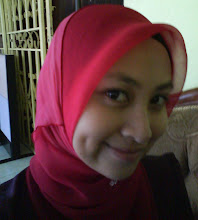Friday, December 25, 2009
SLIDE : Memilih warna yang sesuai
WordArt
NOTE: When you insert or select a WordArt object that is by default assigned the In Line With Text wrapping style, Word sometimes displays rectangular sizing handles only. In this case, you cannot modify the WordArt object by using some of the methods described in this article. To change the text-wrapping style for a WordArt object, select the WordArt object, click Text Wrapping on the WordArt toolbar, and then select the style of text wrapping that you want.
Insert a WordArt Object
1. To insert a WordArt object, follow these steps:
-On the Insert menu, point to Picture, and then Click WordArt.
-Or click the WordArt button on the Drawing toolbar.
-Or click Insert WordArt on the WordArt toolbar.
Note If the WordArt toolbar or the Drawing toolbar are not displayed, point to Toolbars on theView menu, and then click Drawing or WordArt
2. In the WordArt Gallery dialog box, double-click the style that you want.
3. In the Edit WordArt Text dialog box, type your text and select the font and size that you want.
4. Click Bold or Italic to make all the text bold or italic.
Note You cannot apply bold or italic to only a selected part of the text.
5. In the Edit WordArt Text dialog box, click OK.
Your text is inserted into the document.
Edit a WordArt Object
When you select the WordArt object, the WordArt toolbar is displayed. You can also point to Toolbars on the View menu, and then click WordArt to open the WordArt toolbar.
To edit a WordArt object, select the WordArt object, and then use any one of the following methods:
• Edit Text: To edit the text, change the text font or size, or apply bold or italic formatting, click Edit Text on the WordArt toolbar to open the Edit WordArt Text dialog box.
• WordArt Gallery: To select a different text style, click WordArt Gallery on the WordArt toolbar to open the WordArt Gallery dialog box.
• Format WordArt: To apply additional features to the WordArt object, click Format WordArt on the WordArt toolbar to open the Format WordArt dialog box.
• WordArt Shape: To select a different text pattern, click WordArt Shape on the WordArt toolbar, and then click the shape that you want to use.
• WordArt with Letters of the Same Height: To switch between text with the letters of the same height and text in which the first letter of each word is higher than the following letters, click WordArt Same Letter Heights on the WordArt toolbar.
• Text Wrapping: To change the text-wrapping style for a WordArt object, click Text Wrapping on the WordArt toolbar, and then select the style that you want. For more text-wrapping options, click WordArt on theFormat menu, click the Layout tab, and then click Advanced.
Note This setting determines how text is wrapped around a WordArt object. You cannot modify the way that text is wrapped inside a WordArt object.
• WordArt Vertical Text: To switch between vertical text and horizontal text, click WordArt Vertical Text on the WordArt toolbar.
• WordArt Alignment: To select a text alignment style, click WordArt Alignment on the WordArt toolbar.
• WordArt Character Spacing: To select a character spacing style, click WordArt Character Spacing on the WordArt toolbar.
Resize a WordArt Object
To resize a WordArt object, click to select the WordArt object, and then drag one of the uncolored, round sizing handles that appear around the WordArt object.
To maintain the original proportions of the WordArt object as you change its size, press and hold down SHIFT while you drag one of the corner sizing handles. To resize the object symmetrically about its center (that is, to change the size of the object without moving the position of its center), press and hold down CTRL while you drag a sizing handle.
If you change the size of a WordArt object by using the technique specified here, the WordArt object is scaled.
With WordArt objects, and some AutoShapes, Microsoft Office displays a yellow, diamond-shaped reshaping handle. If you drag this handle, you can change some aspect of the object's shape, such as the angle of the sides of a trapezoid, or the thickness of the shaft of an arrow.
Note The effect of dragging a reshaping handle varies widely among different types of AutoShape and WordArt objects.
Rotate a WordArt Object
To rotate a WordArt object, follow these steps:
1. Select the WordArt object that you want to rotate.
2. Do one of the following:
-To rotate to any angle:
-Drag the rotate handle on the object in the direction that you want to rotate it.
-Click outside the object to set the rotation.
Note To constrain the rotation of the object to 15-degree angles, hold down SHIFT while you drag the rotate handle.
-To rotate 90 degrees to the left or 90 degrees to the right:
Position a WordArt Object Within a Document
To change the position of a WordArt object within a document, do one of the following:
• Select the WordArt object, and then use a drag-and-drop operation to reposition the WordArt object.
• Place the mouse pointer over the object (but not over a handle if the object is selected). When the pointer displays cross-arrows, drag the object to the location that you want. (To copy the object rather than move the object, use the same procedure, but hold down the CTRL key while you drag the object.)
• To use the keyboard to move the WordArt object, click the WordArt object, and then press the appropriate arrow key: LEFT ARROW, RIGHT ARROW, UP ARROW, or DOWN ARROW. (You cannot copy the object by using the keyboard method.)
Move a WordArt Object in Front of Text or Behind Text
To move a WordArt object in front of text or behind text, follow these steps:
• Select the WordArt object, and then click Draw on the Drawing toolbar. Point to Order, and then click Bring in Front of Text or Send Behind Text.
Position a WordArt Object in Relation to Page, Text, or Other Anchor
To position a WordArt object in relation to a page, text, or other anchor, follow these steps:
• Select the WordArt object, and then on the Format menu, click WordArt.
• Click the Layout tab, and then click Advanced.
• In the Advanced Layout dialog box, click the Picture Position tab, and then select the options that you want for your horizontal and vertical anchors, for example, margin, page, or paragraph. You can align the object relative to the anchor, or you can type a precise numeric position for the object relative to the anchor.
• To attach an object to a paragraph so that they move together, do one of the following:
-To ensure that the selected object moves up or down with the paragraph that it is anchored to, click to select the Move object with text check box.
-To ensure that an object remains anchored to the same paragraph when you move the object, click to select the Lock anchor check box.
-To enable objects with the same wrapping style to overlap, click to select the Allow overlap check box.
http://support.microsoft.com/kb/312802
Monday, December 21, 2009
PEMBANGUNAN ICT DALAM PENDIDIKAN DI MALAYSIA
ICT (Information Communication Technology) adalah system yang membolehkan pengumpulan, pengurusan, manipulasi, perolehan, dan komunikasi maklumat dalam pelbagai bentuk. ICT dalam pendidikan bermaksud penggunaan teknologi maklumat dan komunikasi yang menyokong proses teras dalam pengurusan dan pentadbiran pendidikan, pengajaran dan pembelajaran (P&P) serta pendidikan sepanjang hayat. Penggunaan ICT dalam P&P membolehkan aktiviti P&P dijalankan tanpa kekangan tempat dan masa, meningkatkan penggunaan sumber pendidikan, perupaya meningkatkan kualiti pendidikan di samping mempercepat proses pendidikan berasaskan kadar kebolehan pelajar.
KPM telah menggariskan tiga dasar utama ICT dalam pendidikan.
1. Dasar pertama adalah literasi ICT untuk semua pelajar, bermaksud pelajar memperoleh kemahiran menggunakan kemudahan ICT.
2. Dasar kedua mengutamakan peranan dan fungsi ICT dalam pendidikan sebagai kurikulum dan alat P&P. ICT sebagai kurikulum bermaksud pelajar mempelajari ICT sebagai mata pelajaran seperti mata pelajaran Teknologi Maklumat bagi peringkat SPM dan mata pelajaran Pengkomputeran bagi peringkat STPM. ICT dalam P&P seperti penggunaan perisian kursus, internet, dan aplikasi generik yang lain (contohnya, perisian CAD dalam mata pelajaran reka cipta dan lukisan kejuruteraan).
3. Dasar ketiga menekankan penggunaan ICT untuk meningkatkan produktivi, kecekapan, dan keberkesanan sistem pengurusan. Ini terhasil daripada pengautomasian pejabat dan pelaksanaan sistem aplikasi pengurusan yang membawa kepada penambahbaikan proses kerja.
Pembangunan ICT dalam pendidikan bagi 10 tahun akan datang bermatlamat untuk:
1. meningkatkan pembangunan infrastruktur ICT;
2. memperluas akses dan ekuiti kepada kemudahan ICT;
3. memperluas kurikulum berasaskan ICT;
4. meningkatkan sistem pentaksiran dengan menggunakan ICT;
5. menekankan pengintegrasikan ICT dalam P&P;
6. meningkatkan pengetahuan dan kemahiran ICT di kalangan pelajar, tenaga pengajar, dan personel KPM;
7. meningkatkan penggunaan ICT dalam pengurusan pendidikan;
8. meningkatkan usaha pengurusan dan penyenggaraan perkakasan ICT;
9. meningkatkan penyelidikan dan pembangunan (R&D) dalam ICT; dan
10. meningkatkan kerjasama antara institusi pendidikan dengan masyarakat dalam membanuk memperkembangkan ICT dalam pendidikan.
Monday, December 14, 2009
Sunday, December 13, 2009
MICROSOFT WORD 2007/2007

Memperkenalkan cara penggunaan perisisn Microsoft Office Word 2003/2007 dan elemen-elemen yang terdapat dalam perisisn ini
TUJUAN AM :
Supaya pelajar memperoleh kemahiran menaip menggunakan perisisan Microsoft Office Word 2003/2007 dalam pembelajaran dan penggunaan untuk masa depan dalam bidang pekerjaan yang memerlukan penggunaan perisian ini.
OBJEKTIF PENGAJARAN :
Pada akhir pengajaran ini, pelajar diharap dapat:
- Menerangkan 7 elemen yang terdapat dalam perisian Microsoft Word 2003/2007
- Menerangkan langkah-langkah menyimpan dokumen yang baru
- Dapat menggunakan perisian Microsoft Office Word 2003/2007 tanpa bantuan guru.
LANGKAH-LANGKAH MEMBUKA PERISIAN MICROSOFT WORD 2003/2007 :
Langkah-langkah membuka perisian Microsoft Office Word 2003/2007 ialah :
- Klik tombol "Start" yang ada di "Taskbar"
- Pilih menu "All Program" dan akan muncul sejumlah senarai perisian
- Arahkan anak panah ke "Microsoft Office"
- Kemudian klik pada nama perisian Microsoft Office Word
- Tunggu sehingga jendela Microsoft Office Word dipamerkan
- Font Type
- Font Size
- Bold
- Italic
- Underline
- Colors
- Shapes













